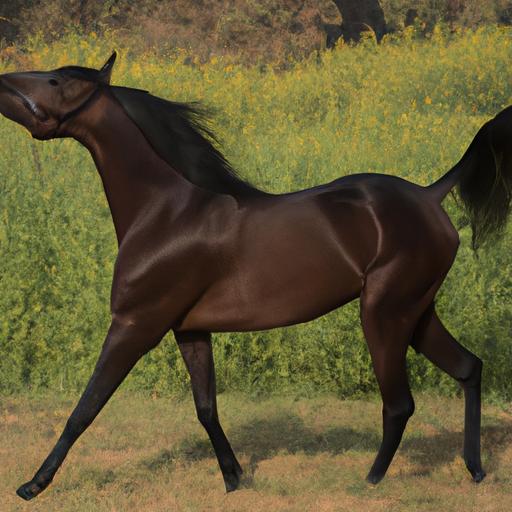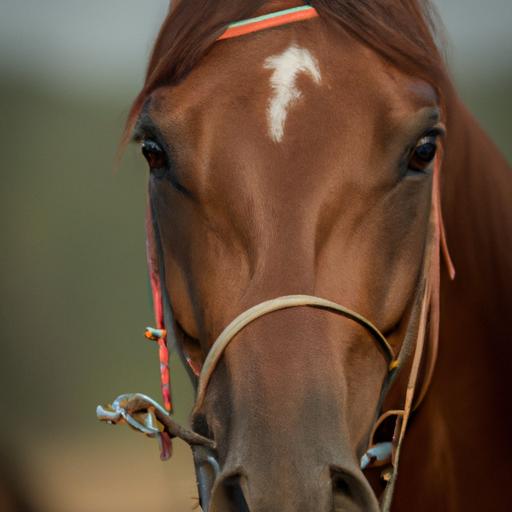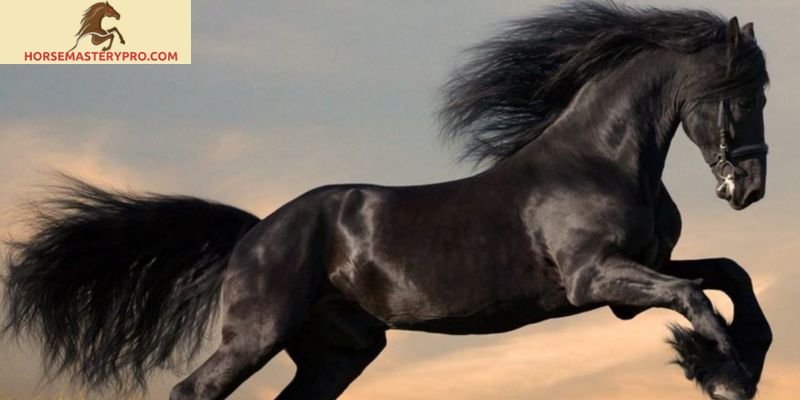Unveiling the majesty of horse breeds of pakistan – their roles in sports, recreation, and notable achievements. Explore the equestrian heritage now!
Pakistan, a land known for its rich cultural history and diverse landscapes, holds a hidden treasure within its equestrian heritage – the exquisite horse breeds of Pakistan. These majestic creatures have played an integral role in the country’s history, serving as trusted companions, loyal allies, and symbols of pride. Today, as we delve into the captivating world of Pakistani horse breeds, we embark on a journey that uncovers the significance of these magnificent creatures and the importance of understanding their unique characteristics.
Horses have long been revered and cherished in Pakistan, their presence intertwined with the nation’s historical fabric. The indigenous horse breeds found in this region possess a rich lineage that dates back centuries, reflecting the cultural and geographic diversity of the land. From the robust and spirited Marwari to the graceful and swift Thoroughbred, each breed carries a tale of its own, representing the distinct regions and traditions from which they hail.
Studying and comprehending the diverse horse breeds of Pakistan is not just a matter of fascination but also of utmost importance. These breeds are a testament to the resilience and adaptability of horses in various terrains and climates. By understanding the unique characteristics, appearances, and temperaments of each breed, we gain valuable insights into their potential uses and capabilities. Whether it be for sports, recreational activities, or conservational purposes, a profound understanding of these breeds equips us with the knowledge needed to harness their full potential.
As we embark on this captivating journey through the horse breeds of Pakistan, we invite you to join us in unraveling the secrets held by these magnificent creatures. Together, let us explore the extraordinary heritage that lies within the borders of this enchanting land and celebrate the timeless bond between humans and horses.
Stay tuned for the upcoming sections, where we will delve deeper into the native Pakistani horse breeds, their roles in sports and recreation, conservation efforts, crossbreeding, and the future prospects that lie ahead.
Get ready to be enthralled by the mystical world of Pakistani horse breeds, as we unravel their stories, one breed at a time.
- Native Pakistani Horse Breeds*
Native Pakistani Horse Breeds

Unveiling the Diversity: A Comprehensive List of Native Horse Breeds in Pakistan
Pakistan, a land blessed with natural beauty and cultural diversity, is home to a remarkable array of native horse breeds. Each breed possesses distinct characteristics that have been shaped by their geographical origins and the traditions of the regions they hail from. Let us embark on a journey to discover the captivating traits of these magnificent creatures.
1. Marwari Horse
The Marwari horse, known for its iconic inwardly curved ears, hails from the desert regions of Rajasthan and Sindh. Renowned for its bravery and loyalty, this breed has a regal appearance and a strong, muscular build. Historically, Marwari horses were used in battle and as symbols of prestige by Rajput warriors.
2. Baluchi Horse
Originating from the arid landscapes of Balochistan, the Baluchi horse is known for its endurance and agility. Its strong legs and compact physique make it well-suited for traversing rugged terrains. Traditionally, this breed has been utilized for long-distance travel and as a reliable companion for nomadic tribes.
3. Kathiawari Horse
Hailing from the Kathiawar Peninsula in Gujarat, India, the Kathiawari horse has also found a home in Pakistan. Characterized by its arched neck and expressive eyes, this breed possesses elegance and grace. Known for its endurance and resilience, it has been traditionally utilized for long rides and as a reliable warhorse.
4. Sindhi Horse
Native to the Sindh province of Pakistan, the Sindhi horse is celebrated for its strength and versatility. With a sturdy build and a gentle disposition, it has been utilized for agricultural work, transportation, and recreational purposes. The Sindhi horse is renowned for its ability to withstand the hot and arid climates of the region.
5. Thoroughbred
While the Thoroughbred breed originated in England, Pakistan has embraced this breed and nurtured a thriving racing industry. Known for its speed and athleticism, the Thoroughbred has found a special place in the hearts of equestrian enthusiasts. Pakistani Thoroughbreds have made their mark on international racing circuits, showcasing the country’s prowess in the sport.
The historical significance of these native horse breeds cannot be understated. They have played vital roles in the rich tapestry of Pakistani culture, serving as symbols of prestige, companions in battle, and reliable partners in daily life. Understanding the unique characteristics, appearances, and temperaments of these breeds allows us to appreciate their contributions to the heritage of Pakistan.
Join us in the upcoming sections as we explore how Pakistani horse breeds have excelled in sports and recreation, the conservation efforts aimed at preserving their legacy, as well as the impact of crossbreeding and imported horse breeds on the native breeds of Pakistan.
- Pakistani Horse Breeds in Sports and Recreation*
Conservation Efforts for Pakistani Horse Breeds

Horse breeds native to Pakistan face numerous challenges in the modern era, threatening their existence and jeopardizing the rich heritage they represent. Factors such as urbanization, changing agricultural practices, and declining interest in traditional equestrian activities contribute to the decline in population and genetic diversity of these breeds. However, amidst these challenges, passionate organizations and individuals have stepped forward to preserve and protect the invaluable legacy of Pakistani horse breeds.
Challenges Faced by Native Pakistani Horse Breeds
The continued urbanization and expansion of human settlements into once rural areas have led to shrinking natural habitats for these majestic creatures. Moreover, the shift from traditional agricultural practices to modern farming techniques has further limited the availability of grazing lands and disrupted the symbiotic relationship between horses and the environment. As a result, many native horse breeds face the threat of habitat loss, decreased genetic diversity, and even extinction.
Ongoing Conservation Efforts
Despite the challenges, dedicated organizations and individuals are working tirelessly to preserve and protect Pakistani horse breeds. These initiatives focus on multiple fronts, including genetic preservation, education, and raising awareness about the importance of these breeds in the cultural and historical context of Pakistan.
One prominent organization leading the way in conservation efforts is the Pakistan Equestrian Federation (PEF). The PEF collaborates with local communities, breeders, and enthusiasts to promote the breeding and welfare of native horse breeds. They conduct breed-specific programs, seminars, and workshops to educate horse owners and breeders about the significance of maintaining breed standards and preserving the genetic diversity of these horses.
Initiatives to Preserve and Promote Pakistani Horse Breeds
To ensure the survival and promotion of Pakistani horse breeds for future generations, various initiatives have been undertaken. These include establishing dedicated breeding centers, creating breed registries, and organizing shows and exhibitions that showcase the beauty and abilities of these indigenous breeds. By raising public awareness and fostering a sense of pride in these horses, these efforts aim to encourage the adoption and conservation of native horse breeds.
Furthermore, collaborations between government bodies, conservation organizations, and local communities are crucial in implementing sustainable conservation strategies. By engaging in dialogue, sharing knowledge, and providing support, these partnerships contribute to the long-term preservation and promotion of Pakistani horse breeds.
In the next section, we will explore the impact of crossbreeding and the introduction of foreign horse breeds on the native Pakistani breeds, delving into the advantages and disadvantages of these practices.
- Crossbreeding and Imported Horse Breeds in Pakistan*
Crossbreeding and Imported Horse Breeds in Pakistan

Crossbreeding and the introduction of foreign horse breeds have undoubtedly left a significant impact on the native Pakistani breeds, shaping the equestrian landscape of the country. In this section, we will delve into the consequences of crossbreeding and the presence of imported breeds, analyzing both the advantages and disadvantages they bring to the table.
Impact of Crossbreeding and Imported Horse Breeds
Crossbreeding, the practice of mating horses of different breeds, has opened doors to new possibilities and potential enhancements in the equine world. By introducing foreign bloodlines, breeders aim to combine desirable traits from different breeds, creating a fusion of characteristics that can improve performance or adaptability. However, this practice also poses challenges to the preservation of native Pakistani breeds, as it dilutes their gene pool and alters their traditional traits.
Advantages and Disadvantages of Introducing Foreign Breeds
The introduction of foreign horse breeds to Pakistan has its benefits and drawbacks. On the positive side, imported breeds can bring new talents and skills that may complement the existing capabilities of native breeds. They can contribute to the advancement of specific disciplines, such as dressage or show jumping, where certain traits are highly valued. Moreover, the infusion of new genes can enhance the overall health and vigor of the equine population.
However, the presence of foreign breeds also raises concerns. It is crucial to strike a balance between preserving the integrity of native Pakistani breeds and embracing the advancements brought by imported breeds. The risk of losing the distinct characteristics and traits that define indigenous breeds looms large, as crossbreeding may dilute their uniqueness or alter their suitability for specific tasks.
Influence of Crossbreeding on Traditional Uses and Characteristics
Crossbreeding undoubtedly influences the traditional uses and characteristics of indigenous horse breeds. As foreign bloodlines are introduced, certain traits may be enhanced, while others may diminish. It is essential to carefully evaluate the impact of crossbreeding on the working abilities, temperament, and conformation of the native breeds. Striking a harmonious balance between preserving the heritage of Pakistani breeds and harnessing the potential of crossbreeding remains a delicate task.
In the next sections, we will explore the future prospects of horse breeds in Pakistan and conclude our journey through the captivating world of Pakistani equines.
- Future Prospects and Conclusion*
Future Prospects and Conclusion
The future of Pakistani horse breeds shines bright with immense potential for growth and development. As we continue to appreciate the rich equestrian heritage of this nation, it becomes crucial to ensure the preservation and promotion of these indigenous breeds for generations to come.
With the increasing recognition of Pakistani horse breeds in the international equestrian community, opportunities for their utilization in various sports, recreational activities, and even therapeutic programs are expanding. The distinct qualities and adaptability of these breeds make them suitable for a wide range of disciplines, such as polo, equestrian events, endurance riding, and much more.
Moreover, the efforts of dedicated organizations and individuals in conserving these breeds are commendable. Through specialized breeding programs, genetic preservation initiatives, and awareness campaigns, the importance of preserving the unique genetic traits and cultural significance of Pakistani horse breeds is being emphasized. These conservation efforts aim to safeguard the heritage of these breeds and ensure their long-term viability.
In conclusion, the horse breeds of Pakistan embody the nation’s rich cultural heritage and represent the harmonious relationship between humans and animals. By understanding and appreciating these magnificent creatures, we not only gain insights into their exceptional qualities but also contribute to their preservation and growth. As we look towards the future, the prospects for Pakistani horse breeds are promising, with increasing recognition, conservation efforts, and opportunities in various domains.
At Horsemasterypro.com, we strive to promote the knowledge and appreciation of these remarkable horse breeds. Join us in celebrating the legacy and allure of Pakistani horse breeds, as we continue to unravel their captivating tales and foster a deep connection between humans and horses.
Remember, the horse breeds of Pakistan are not just a part of history; they are living testaments to the enduring bond between humans and these majestic creatures.
Stay tuned for more exciting articles and insights on the world of Pakistani horse breeds at Horsemasterypro.com!


